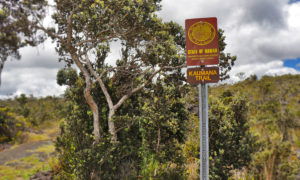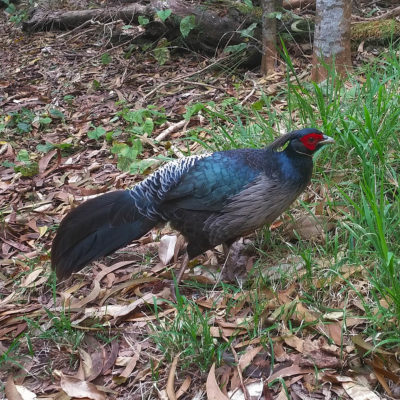Lophura leucomelanos | kalij pheasant
Introduced
Other Names: kaleege
The kalij pheasant was first brought to Hawaiʻi in 1962 from Southern Asia as a gamebird. At about 33 inches long, the males are black with a gray belly, while the females are mottled brown. They have a distinct red skin patch around their eyes and a crest of feathers atop their heads. They are relatively common in the upland areas, so keep a look out for them scurrying by.
Hotspots for kalij pheasant
- Kaloko-Honokōhau National Historic Park | Details for Kaloko-Honokōhau National Historic Park
- Honua‘ula Forest Reserve (Makāula -‘O‘oma section) | Details for Honua‘ula Forest Reserve (Makāula -‘O‘oma section)
- Pu‘u Wa‘awa‘a ʻŌhiʻa Trail | Details for Pu‘u Wa‘awa‘a ʻŌhiʻa Trail
- Waiki‘i (off Old Saddle Road) | Details for Waiki‘i (off Old Saddle Road)
- Palila Forest Discovery Trail | Details for Palila Forest Discovery Trail
- Pu‘u Huluhulu Trail | Details for Pu‘u Huluhulu Trail
- Pu‘u ‘Ō‘ō Trail | Details for Pu‘u ‘Ō‘ō Trail
- Kaulana Manu Nature Trail | Details for Kaulana Manu Nature Trail
- Kaūmana Trail | Details for Kaūmana Trail
Kaloko-Honokōhau National Historic Park
Wetland
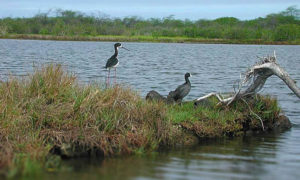
Honua‘ula Forest Reserve (Makāula -‘O‘oma section)
Wet forest
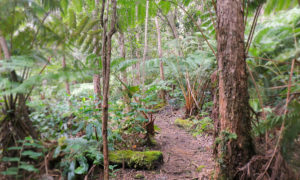
Pu‘u Wa‘awa‘a ʻŌhiʻa Trail
Dry forestPasture and grasslands
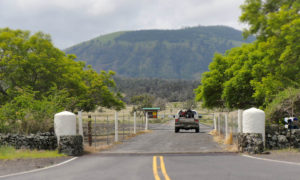
Waiki‘i (off Old Saddle Road)
Pasture and grasslands
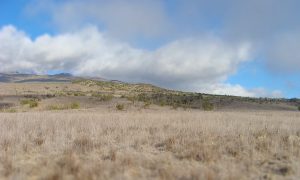
Palila Forest Discovery Trail
Dry forest
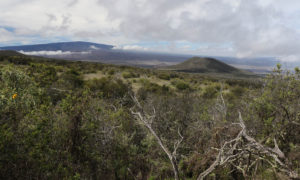
Pu‘u Huluhulu Trail
Dry forest
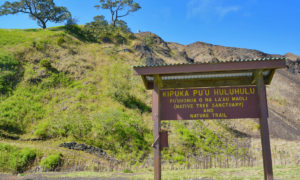
Pu‘u ‘Ō‘ō Trail
Wet forest
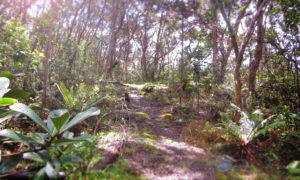
Kaulana Manu Nature Trail
Wet forest
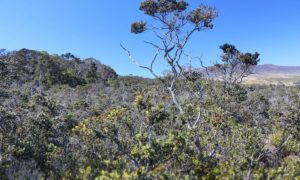
Kaūmana Trail
Wet forest
